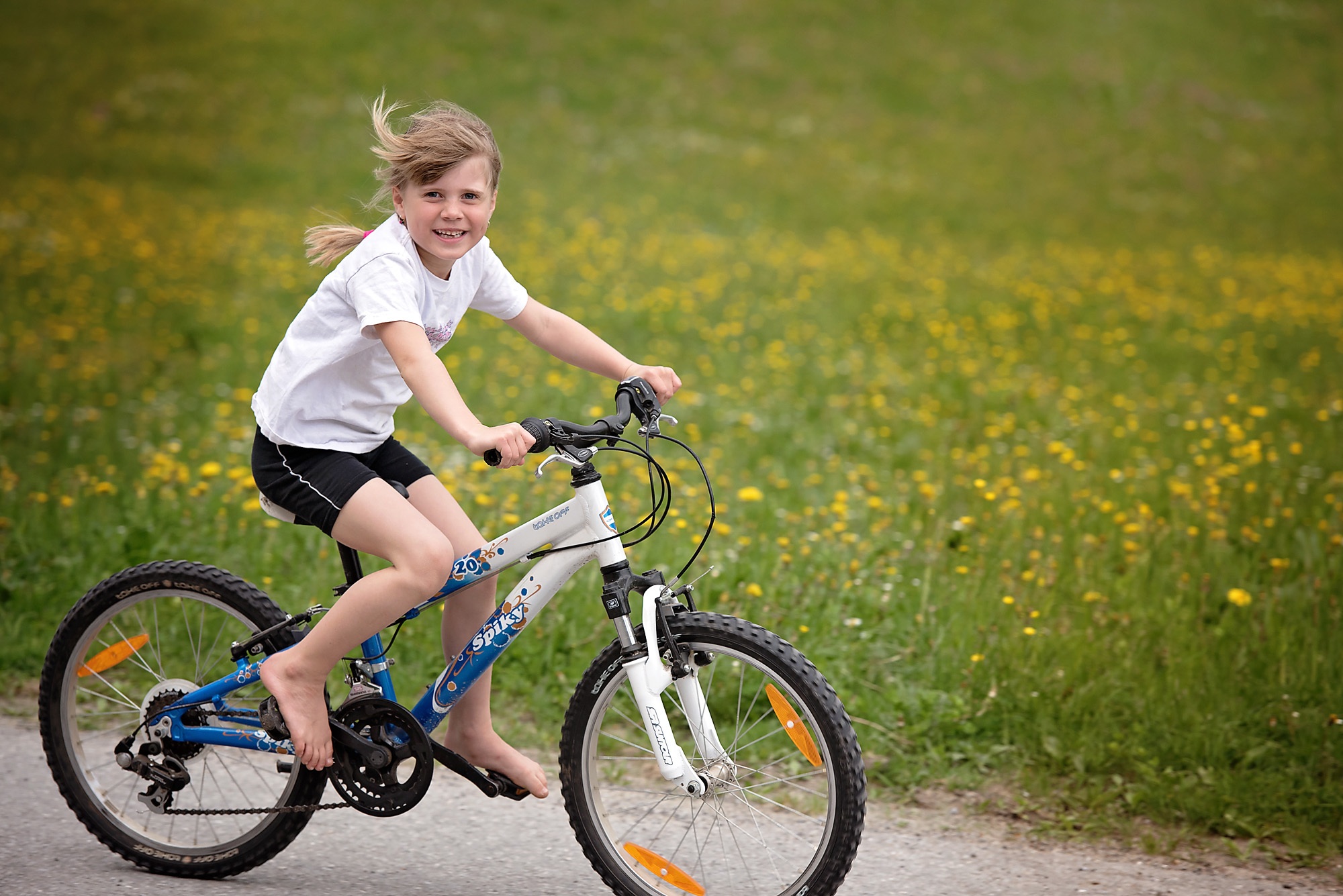Riding a bike is an essential lifelong skill. Many people fondly remember the story of how an adult in their life first taught them how to ride without training wheels.
It is essential that specific safety rules are integrated into the initial teaching of how to ride a bike. Children should know the importance of wearing a helmet at all times. According to a blog post by Steve Calechman, on the Harvard Health Publishing website there are four tips that are integral to initially teaching a child how to safely ride their bike on the road without training wheels.
Get on a bike yourself.
Like with cleaning or table manners teaching by way of example is very important. Children look up to adults in their lives as role models, and subsequently will try to emulate their behavior by any means necessary. If you show safe and secure bike riding techniques, they will likely follow your lead and perform the task similarly. Additionally, by riding the bike yourself you will be able to feel the terrain and see the situation from their point of view. This shared experience and empathy will help you more adequately give advice and guide them during the initial first steps of their ride
Predict routes.
Take a walk, jog, or light bike around the neighborhood in order to scope out the best possible area for their practice. Try to avoid super rocky or uneven areas as those can be harder to balance and learn how to bike smoothly. Predicting the routes will not only help ensure their bike riding success, but will also give you peace of mind knowing that no large obstacle or rough road will cause bumps, scrapes, and bruises along the way
Practice passing.
Assuming that your child will not simply ride their bike alone in an unpopulated area means that you need to prepare them for how to deal with certain variables, including passing other runners, walkers, or bikers on the road. Riding in a straight line on a smooth road isn’t the challenge, Calechman argues. It’s when a speeding car passes, or if you’re riding in a line with a group of friends that can pose difficult and fast paced decision making. This rule also incorporates rule number one, as you can help provide an example of passing for your child by riding alongside them.
Be prepared to repeat yourself.
Generally, a new skill or pattern is unlikely to be mastered on the first try. Therefore, you will need to say reminders about safety and riding habits as your child begins learning and practicing this newfound skill. The old clichéd saying of “practice makes perfect” correlates to this notion. Repetition and practicing the new skill correctly will help cement the skill and safety rules of learning to ride a bike for your child. Make sure to offer praise and well wishes for a job well done. Calechman suggests making games out of practicing and repeating safety rules. For example, have the child shout “I’m crossing” whenever they are at an intersection.
Overall, riding a bike is a lifelong skill.
These four tips will help your child move beyond tricycles and training wheels and gain a sense of independence. It will also help their self confidence with the acquisition and mastery of a skill they will never grow out of. Making sure to repeat the importance of safety is crucial and cannot be overlooked. By riding yourself, this may even help you hone your own bike riding skills. Mastering a skill at any age makes creates a sense of accomplishment and in the child’s case, maturity. Going through and learning something is a great life lesson. People are always learning new skills, and mastering different things. The earlier children learn how to adapt and learn, the better students they will be for a lifetime of learning new skills, concepts, and ideas.
How did you teach your child to ride a bike? Do you ride together sometimes? Share your experience and tips.

















